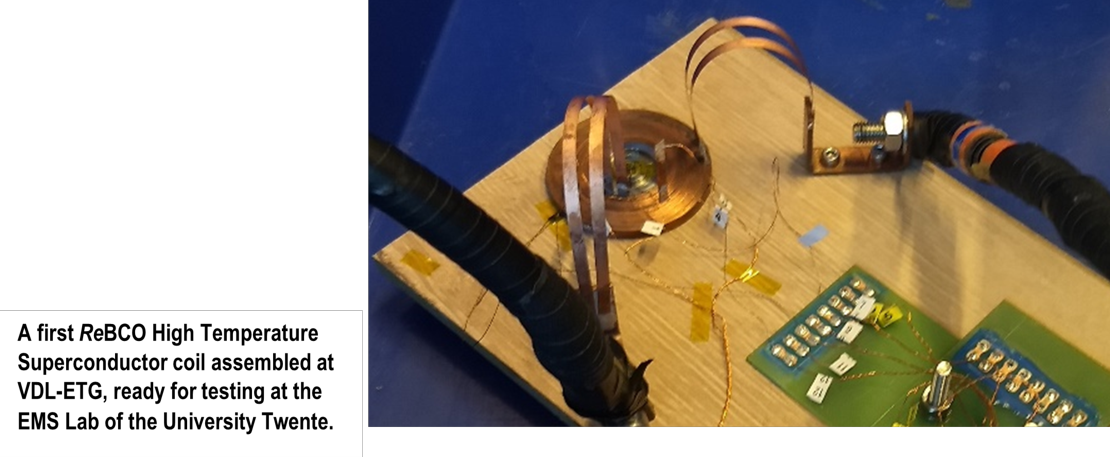The cluster Energy, Materials and Systems is pleased to announce the start of the ‘Super Actuator’ program, an important step forwards in the strengthening of the collaboration with VDL-ETG. The program comprises two interlinked R&D lines.
The first R&D line, in collaboration with the chair of Precision Engineering at the Faculty of Engineering Technology, concerns the development of Miniature Superconducting Actuators for Big Science and Aerospace.
The second R&D line, together with the chair of Inorganic Materials Science at the Faculty of Science and Technology, explores the 3D-deposition of Magnetic Structures on Nano-sheet Buffered Technical Substrates.
Both lines are supported by the Top Sector High Tech Systems and Materials of the Netherlands Enterprise Agency RVO.

The central aim of the research line “Miniature Superconducting Actuators” is the development and demonstration of new compact, powerful and highly efficient precision-actuators for cryogenic optical components used in ‘Big Science’ and in space-based satellites, based on superconducting drive coils. Main challenges are the miniaturization of the so-called ReBCO high-temperature superconducting solenoids; the realization of low-vibration cryogenic cooling; and the mechanical integration of the actuator employing multi-functional flex-sheets.
The parallel research line “3D-deposition of magnetic structures” seeks to re-evaluate the feasibility of depositing superconducting ReBCO layers directly on curved technical substrates, through adaptation of nano-sheet buffer layer technology in conjuncture with Pulsed Laser Deposition (PLD). Particular challenges here are the identification of suitable substrates and patterning methods; the optimization of the achievable critical current density; and the realization of a multi-layer deposition process.
Superconducting technology uses electric current densities that are orders of magnitude higher than those achievable in metallic conductors, which offers two key advantages: high power-density and increased efficiency. The first one makes it possible to miniaturize actuators in applications that pose stringent restrictions on space or weight. The second advantage allows to actuate e.g. optical components that are vulnerable to parasitic heat sources. The maturity level of ReBCO superconducting material and of cooler technology is such that we are confident that both advantages can be achieved with state-of-the-art conductors and devices. However, direct PLD deposition of ReBCO superconductor on structural components will greatly facilitate actuator manufacture and hence lower cost.
The two R&D lines will be carried out by young researchers: two PhD positions, one PDEng and a Post-Doctoral scientist; supported by engineering and scientific staff at the University research chairs and at VDL-ETG.
Additional information: Dr. Marc Dhallé (Miniature Actuators) and Dr. Anna Kario (3D deposition).





